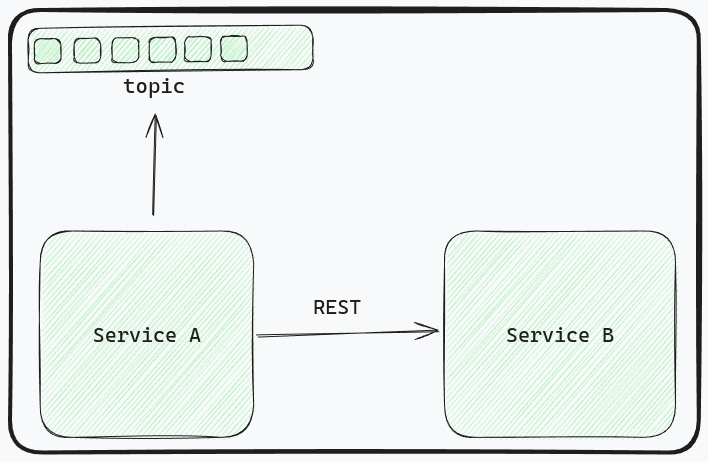
Scenario:
You have an event-driven application that needs to integrate with a third-party REST API (Service B) without modifying it. To ensure reliable message processing, you want to introduce Service A as a mediator that consumes events and interacts with Service B in an idempotent manner.
Idempotency Requirement:
- Service A: Service A must be idempotent to prevent duplicate event processing. This means if the same event is received multiple times, Service A should only process it once.
- Service B: Ideally, the calls from Service A to Service B should also be idempotent. This ensures that even if a request is retried due to network issues, it won’t cause unintended side effects on Service B.
Solution:
Here’s how Service A can achieve idempotency:
Event Deduplication:
- Implement a mechanism to track processed events. This can be achieved using a in-memory set or a database table depending on your application’s requirements and scalability needs.
- When a new event arrives, check if its unique identifier (e.g., event ID) exists in the chosen storage mechanism.
- If the ID is found, the event has already been processed, and Service A can safely skip further actions.
- If the ID is not found, store it for future reference and proceed with processing the event.
Idempotent Calls to Service B:
- If Service B supports idempotent operations (check its API documentation), leverage the recommended approach.
// Track processed events (replace with database for persistence)
var processedEvents map[string]bool
// Handle an event
func handleEvent(eventID string) {
// Check if already processed
if processedEvents[eventID] {
// skip duplicate event
return
}
// Mark as processed
processedEvents[eventID] = true
// Process the event data
// ...
}
// Simulate calling Service B (idempotency logic on Service B's side)
func callServiceB(eventID string) {
// ... (idempotent call logic)
}